Flat tires can be frustrating, especially if you can't change them right away. If this is the case, you may be wondering how long you can let a car sit on a flat tire. Let's take a look at what is recommended by the experts.
Typically, you don't want to let a car sit with a flat tire for over 24 hours. After that, you can cause irreversible damage to the rim. A tire rim isn't meant to hold the weight of a car or any vehicle for long periods of time.
Leaving your car sit with a flat tire for too long will inevitably cost you more in the end. In this article, we will discuss why and what to do if you have a flat tire in your car. In addition, we will answer other frequently asked questions about car tires, so read on!
How Long Can You Leave A Car With A Flat Tire?
If you drive for long enough, sooner or later, you are going to be the victim of a flat tire. In some cases, you won't be able to change the flat tire right away.
This could be due to being late for work or not having a spare tire. Whatever the case, you may be wondering how long you can let a car sit with a flat tire and not damage your rim or tire in any way.
The answer is that you typically don't want to leave it for over 24 hours. While it may not seem like a big deal, you will likely be looking at paying for more than just a tire.
When you get a flat tire, the rim has nothing to protect it from the weight of your car, which can cause it to buckle or bend. So, not only will you have to pay for a new tire, but you may also need to pay for a new rim as well.
Therefore, if at all possible, try and change your tire right away or call someone who can help you get the job done quickly. In case you don't have a spare, call your insurance to see if they can cover a tow truck to get you to the nearest tire shop.
Under no circumstances try to drive on a flat tire, as this can cause even more damage and put you in danger on the road. It's best to play it safe and take care of the problem right away.
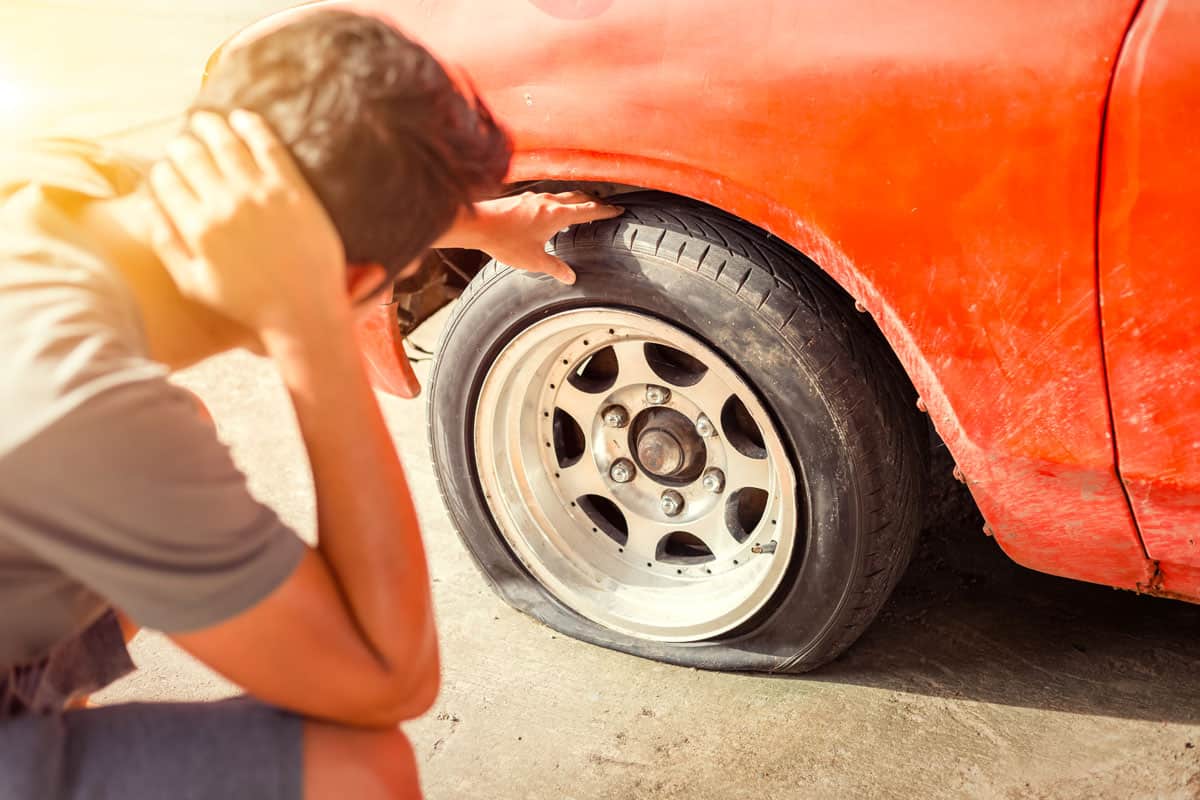
How Much Does It Cost To Fix A Flat Tire?
Depending on what is the cause of the flat tire and what needs to be done to fix it, the cost can vary. Sometimes a flat tire is due to a leaky valve or a screw. In this case, some tire shops will fix this issue for free to hopefully get your business in the future.
If the tire is shot and needs to be replaced, the cost range depends on the type of tire. For instance, a standard new tire can cost anywhere between $50-200 or more per tire.
If you have to replace the rim, this will be even more expensive. On average, it can cost around $200-400 per rim.
In addition, there is usually a fee for balancing and alignment that needs to be done as well. This can range from $50-150 depending on the shop.
Lastly, it also depends on the tread life of the other tires. If the other three tires are still in good condition, you might get away with just replacing the flat tire.
But if your other tires also need to be replaced in order for them to match the new one, that will add even more cost on top of it all. If you have one new tire with three that have bad tread life, this can cause other issues with your car down the road, so it's best to replace all four tires as soon as possible.
Do Tire Warranties Cover A Flat?
Depending on how the flat tire happened, some warranties will cover the cost of fixing it. For example, if the tire is defective in any way, the warranty should cover it.
However, most warranties do not cover roadside assistance or flat tires due to punctures or normal wear and tear. So if your tire got a nail in it or went bald, usually you will have to pay out of pocket for the repair.
The best thing you can do is read the terms and conditions of your tire's warranty to make sure you know exactly what is covered and what isn't.
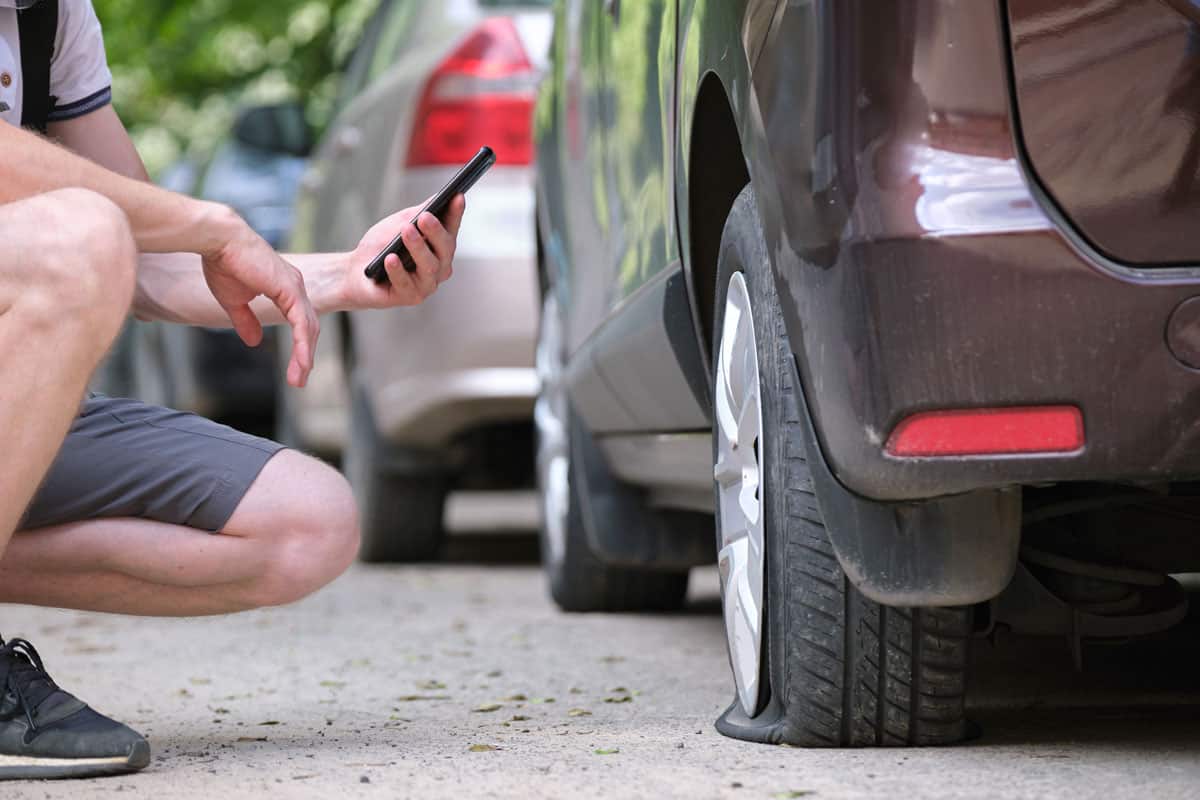
How Long Does It Take To Fix A Flat Tire?
No matter how much experience you have changing a tire, it's never fun. Depending on the size of your car and its tire type, it can take around 15-30 minutes to change a flat tire.
Keep in mind this is for someone who has experience changing tires. It could take significantly longer if you've never changed a tire before.
It also depends on the tools and equipment you have available to make the job easier. Having a few basic tools like a jack, lug wrench, and tire iron can help get the job done much faster and smoother than if you don't have the right tools.
Also, each vehicle puts spare tires and tools in different areas, so figuring out where everything is located can also add to the process. Some are pretty straightforward, while others require using tools to access the spare tire.
If you aren't sure where to find the spare tire or tools, consult your owner's manual to figure it out. If all else fails, don't hesitate to contact a professional mechanic or ask someone for help who has done it before. You don't want to harm yourself or your car in the process.
Once you get the spare tire on, be sure to visit a tire shop as soon as possible to have your flat tire fixed or replaced. Driving long term on a spare is not recommended and can potentially put you in danger on the road. It's best to play it safe and take care of the problem right away.
How Do You Change A Flat Tire?
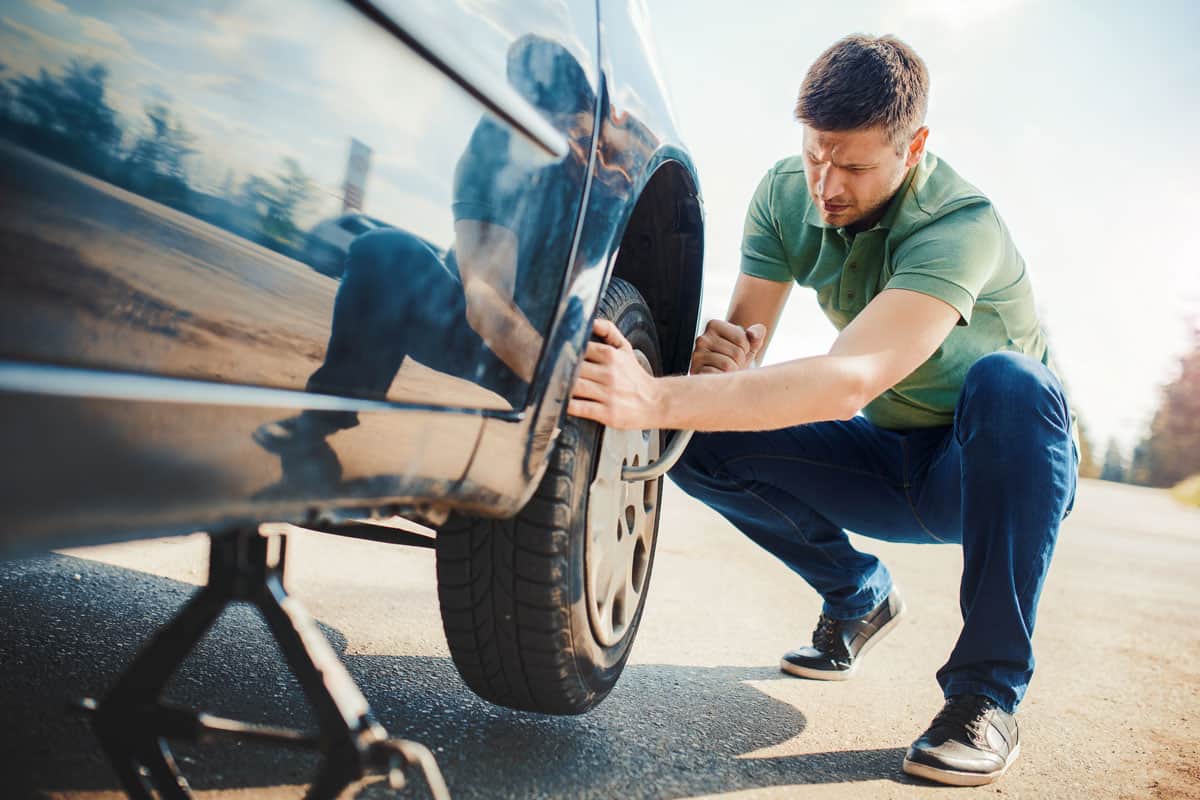
If you aren't sure how to change a flat tire, we will walk you through the basic steps below:
- First, ensure you are parked safely with your emergency brake engaged and hazard lights on. Also, flat ground is preferable, as changing a tire on an incline could be more difficult and dangerous.
- Next, access your owner's manual to find where your jack, lug wrench, and spare tire are located. Once you locate these items, use the jack to raise the car off the ground so that the flat can be removed from the wheel.
- Next, use your lug wrench to loosen all of the lug nuts.
- Once the lug nuts are loose, place the jack under the frame nearest the flat tire.
- Jack the car up until the tire is off the ground.
- Ensure that the care is stable and secure.
- Remove the lug nuts and place them in a safe location.
- Carefully remove the flat tire and replace it with the spare.
- Hand-tighten the lug nuts one by one in a cross order. You may need to press against the spare so it sits flush with the wheel.
- Now, lower the tire until it is on the ground.
- Using the tire iron, tighten the lug nuts completely.
- Now that the tire is changed, carefully drive to a tire shop where you can have the flat fixed or purchase new tires.
Changing a flat tire isn't fun, but it's an important skill to have and can save you in a pinch. With the right tools and practice, you can change tires like a pro in no time. Just remember to stay safe and always consult your owner's manual or a professional if you have any questions or concerns.
Are There Ways To Avoid A Flat Tire?
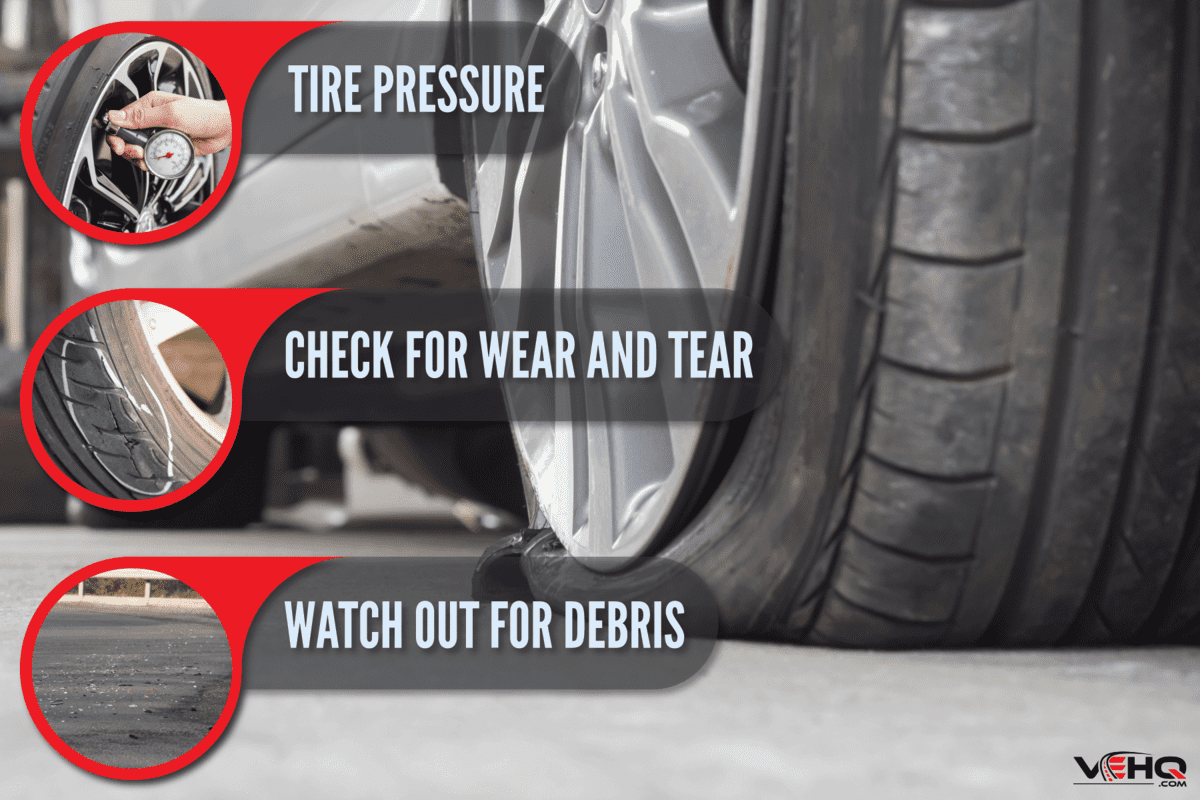
While sometimes a flat tire is the result of pure bad luck, there are several things you can do to help avoid one.
Tire Pressure
Your tire pressure should be checked at least once a month, as it can affect your tire's performance and longevity. Keeping the tire pressure within the range of the manufacturer's recommendation is key for avoiding flats.
If you have a tire light on, stop at a gas station and fill up your tires as soon as possible.
Check For Wear And Tear
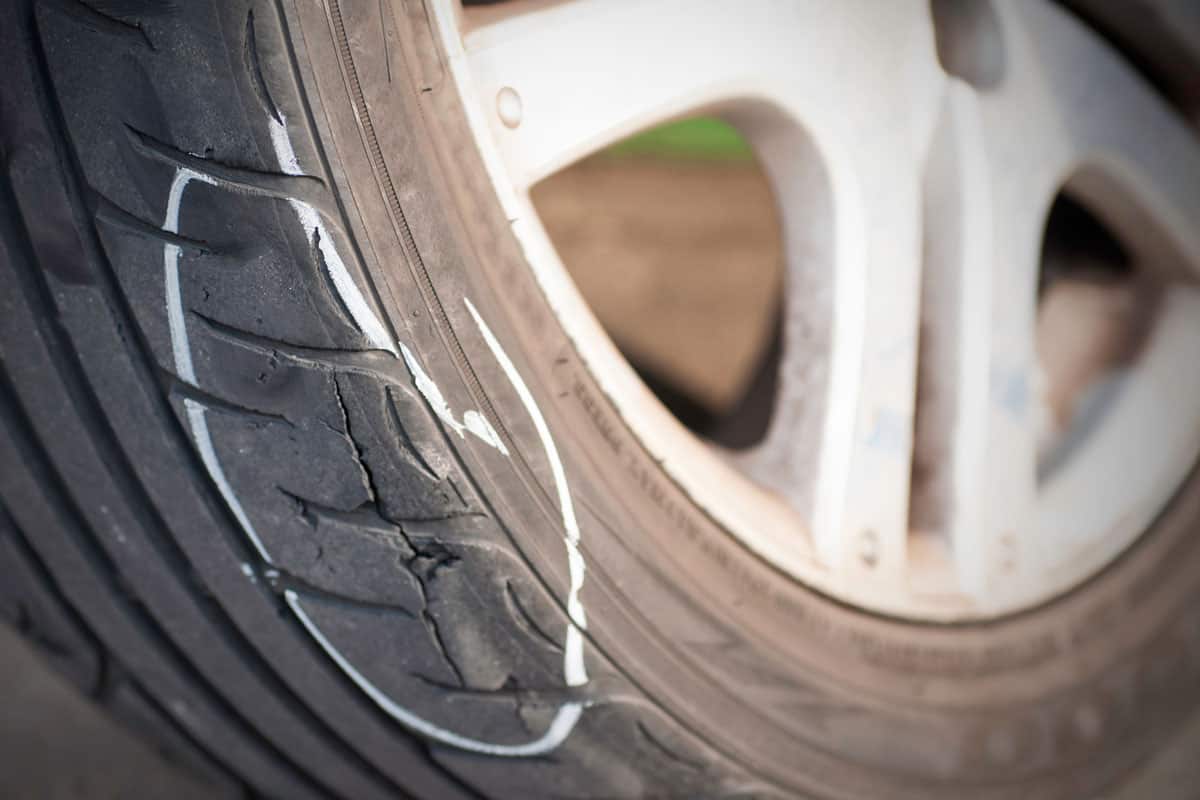
Keep an eye out for any signs of wear and tear on your tires. If you notice uneven tread or bulges in the sidewalls, it's a sign that you need to replace your tires.
To help combat this, regular tire rotations can help prolong the life of your tires. Rotating your tires every 5,000-7,500 miles can help ensure that your car is running safely and efficiently.
Also, a tire alignment once a year can help reduce wear and tear on your tires.
Watch Out For Debris
Finally, be aware of any debris on the road while you're driving. This also includes avoiding potholes or hitting speed bumps too quickly. If you can, drive around any objects or debris in the road to help avoid a flat tire.
Final Thoughts
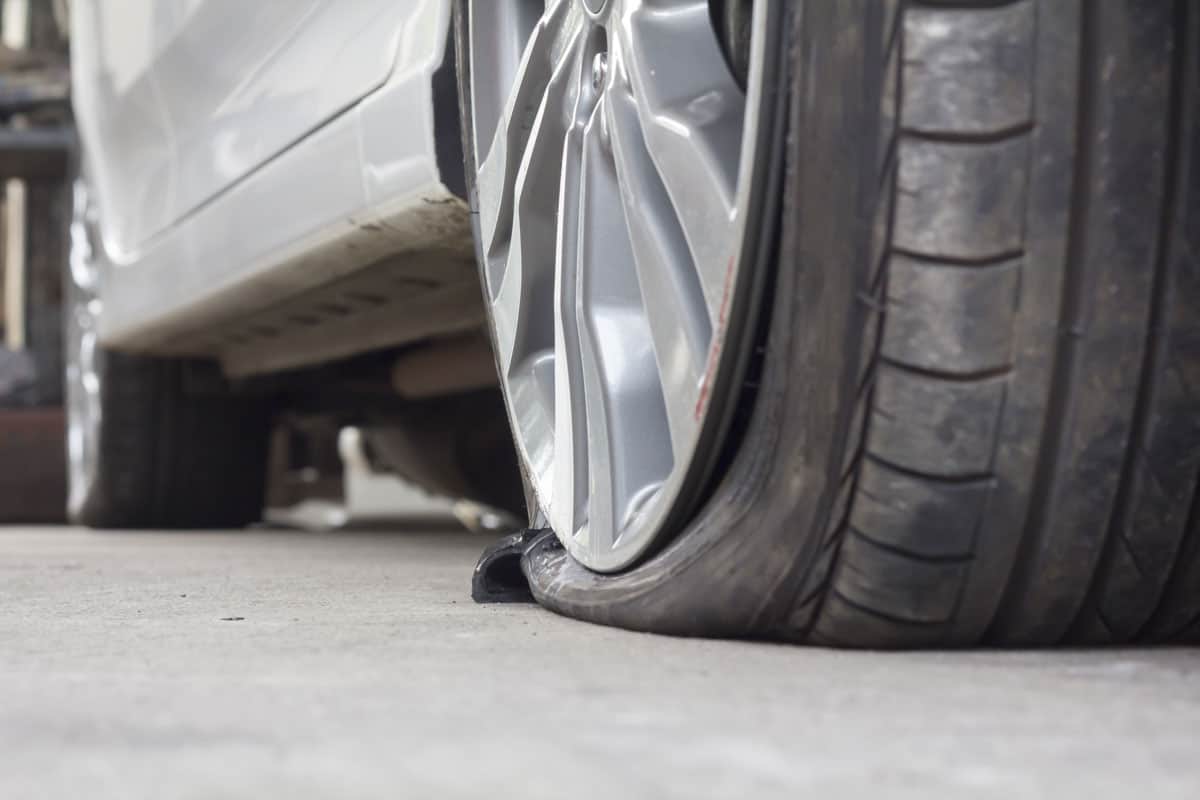
Overall, no one likes dealing with a flat tire, but avoiding the issue will only cause more issues down the road. If you need help, don't hesitate to call a friend or professional for assistance. With the right knowledge and practice, you can keep your tires in top shape for years to come.
Made it to the end? Here are other articles you might enjoy:
